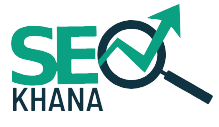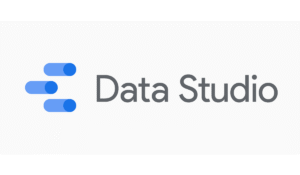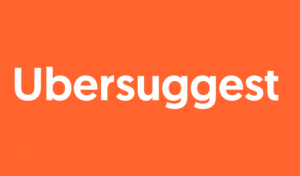Think you know everything about SEO? Think again. While everyone’s busy chasing backlinks and stuffing keywords, there’s a hidden gem that could give you a major edge — anchor text. It’s one of the most underrated tools in the SEO world, and if you’re not using it right, you’re leaving serious results on the table.
In this article, we’re pulling back the curtain on the real power of anchor text. Whether you’re trying to boost traffic, improve rankings, or simply outsmart your competition, understanding how to use anchor text effectively could be the game-changer you’ve been looking for. Ready to level up your SEO strategy? Let’s dive in.
What Is Anchor Text?
If you’ve ever clicked on a hyperlink in an article or webpage, chances are you’ve already seen this concept in action — even if you didn’t know what it was called. So, what is it exactly? In simple terms, it’s the visible, clickable text in a hyperlink. It usually appears in a different color or underlined to stand out from the surrounding content.
The meaning goes beyond just being clickable. It gives both users and search engines context about the content of the page it links to. When used correctly in SEO, this becomes a powerful tool to signal relevance, improve site structure, and boost your rankings. By carefully choosing the words, you help Google understand the connection between pages — and that can make all the difference in your SEO performance that increase conversion rate website.
Why Is Anchor Text Important for SEO?
Anchor text is a powerful SEO tool that helps search engines better understand and rank your content. Proper use of it improves your website’s visibility and authority.
- Helps Google understand the linked page: The words used in the link act as clues for Google’s algorithms to determine the topic of the destination page.
- Improves ranking for specific keywords: Strategic use of keywords within links boosts the page’s relevance in search results, enhancing overall SEO performance.
- Enhances site authority: A balanced distribution of link phrases signals natural and trustworthy linking patterns, which improves your site’s credibility.
Avoids penalties: Over-optimization or spammy use of link phrases can lead to search engine penalties, so maintaining variety and natural usage is essential..
How Does Google Treat Anchor Text?
Google uses anchor text as a key signal to understand the context and relevance of the linked page. When Google crawls a webpage, it analyzes the anchor text to determine what the destination page is about, helping it decide how to rank that page for related search queries.
However, Google also looks for natural and diverse anchor text distribution. Overusing exact-match keywords or manipulative anchor texts can raise red flags and lead to penalties. Google’s algorithms prioritize relevance and user experience, so well-crafted anchor text that accurately reflects the linked content will boost your SEO efforts.
In summary, Google treats anchor text as a meaningful clue but expects it to be used thoughtfully and naturally.
What Is Anchor Text Distribution and Why Does It Matter?
Anchor text distribution refers to the variety and balance of different types of anchor texts used throughout your website’s links. Instead of repeatedly using the same keyword-rich anchor text, a healthy distribution includes a mix of branded terms, generic phrases, exact keywords, and natural language.
Why does it matter?
Because search engines like Google look for natural linking patterns. Overusing exact-match keywords can appear manipulative and may lead to ranking penalties. A well-balanced anchor text distribution signals authenticity and helps improve your site’s overall SEO performance by:
- Making your link profile look natural and trustworthy
- Avoiding penalties for keyword stuffing
- Enhancing user experience by providing meaningful and relevant link descriptions
Maintaining good anchor text distribution is a key part of an effective anchor text SEO strategy. A comprehensive on-page SEO audit can help identify imbalances, over-optimization, or missed opportunities in your internal linking structure—ensuring that your anchor text supports both search engine visibility and a smooth user experience.
What About Internal Link Anchor Text?
Internal links connect different pages within the same website, helping both users and search engines navigate your site easily. The clickable text used for these links is crucial because it provides context about the linked page.
Using clear and relevant phrases in internal links improves user experience by guiding visitors to related content. It also helps search engines understand the structure and hierarchy of your site, which can boost your rankings.
To maximize benefits, vary the link phrases naturally, avoid overusing exact keywords, and make sure the text clearly describes what users will find on the linked page.
read the related articles:
- What Is a Meta Description and How It Impacts Your SEO Strategy
- What is Bounce Rate and How Does It Impact SEO?
- How Image Compression Boosts SEO, Page Speed, and User Experience

How to Analyze Anchor Text Effectively
Analyzing the words used in hyperlinks is crucial for improving SEO and user experience. The choice of link phrases impacts how search engines understand your content and how users navigate your site. Here’s a step-by-step guide to help you evaluate and optimize these link phrases properly:
Check Relevance to the Linked Content
Ensure the phrase accurately reflects the topic of the page it points to. This clarity helps both visitors and search engines understand the connection.
Use Varied Phrases
Avoid using the same wording repeatedly. Mix brand names, descriptive terms, and related keywords to create a natural linking profile.
Keep It Concise and Clear
Choose short, meaningful phrases that convey the target page’s purpose without overwhelming the reader.
Consider the Surrounding Context
The sentence containing the link should provide context that supports and clarifies the linked page’s content.
Avoid Overlinking
Don’t overload your pages with too many hyperlinks, which can dilute their value and negatively affect SEO.
Monitor Performance
Track how users interact with your links through analytics tools to see which phrases drive the most traffic and engagement.
Recommended tools:
- Ahrefs
- SEMrush
- Moz
- Ubersuggest
Tips for Using Anchor Text the Right Way
- Be Relevant and Specific
Use wording that clearly relates to the destination page to help users and search engines understand what to expect. - Vary Your Word Choices
Mix different expressions, including brand names, keywords, and descriptive terms, to keep your linking profile natural. - Keep It Natural and Readable
The linked phrase should fit smoothly into the sentence without disrupting the flow or sounding forced. - Avoid Overstuffing Links
Don’t place too many links on one page or within a single paragraph to prevent confusion and maintain link value. - Use Descriptive Phrases
Instead of generic terms like “click here,” choose phrases that describe the content or purpose of the linked page. - Consider User Experience
Ensure links are helpful and guide visitors intuitively to related or important information. - Test and Optimize
Regularly review which link phrases perform best and adjust your strategy accordingly.
Additional Frequently Asked Questions
- What makes a good clickable phrase in a hyperlink?
A good clickable phrase should be clear, concise, and directly related to the content it links to, helping users know exactly what they will find. - How important is link phrase diversity for SEO?
Using a variety of link phrases creates a natural linking pattern, which search engines favor and can improve your site’s ranking. - Can too many links harm my website’s credibility?
Yes, excessive linking on a page can confuse users and dilute the value of each link, potentially hurting your SEO efforts. - Should every link phrase be keyword-rich?
Not necessarily. While keywords help with SEO, it’s important to balance keyword use with natural, user-friendly language. - How can I track the effectiveness of my linked phrases?
Using web analytics tools allows you to monitor click-through rates and user behavior, helping you optimize your linking strategy.
How SEO Khana Harnesses the Hidden Power of Link Phrases to Boost Your Search Rankings
SEO Khana is recognized as the best SEO company, providing a comprehensive range of SEO services aimed at significantly improving your website’s visibility on search engines. Their tailored strategies ensure that your online presence reaches the right audience effectively.
With a team of experienced local SEO experts, SEO Khana focuses on optimizing your website to attract and engage local customers, helping your business stand out in competitive local markets.
A key part of their process involves conducting a thorough technical SEO audit service. This helps identify and fix any hidden technical issues that could negatively impact your site’s ranking and overall performance.
In addition, SEO Khana excels in on page SEO optimization, refining every element of your website—from content and keywords to meta tags and internal linking—to align perfectly with search engine requirements.
Whether you run a small business or manage an E-commerce platform, their strategic use of effective link phrases plays a vital role in unlocking higher search rankings and driving sustainable, long-term growth.
Conclusion
In conclusion, the strategic use of carefully chosen link phrases holds immense potential in enhancing your website’s search engine rankings. By ensuring relevance, variety, and natural integration, businesses can unlock this hidden power to drive more targeted traffic and improve overall user experience.
Partnering with experts like SEO Khana, who specialize in comprehensive SEO services including technical audits and on-page optimization, can maximize these benefits. Harnessing the true potential of link phrases is not just a tactic but a fundamental part of any successful SEO strategy aimed at sustainable growth and stronger online presence.






